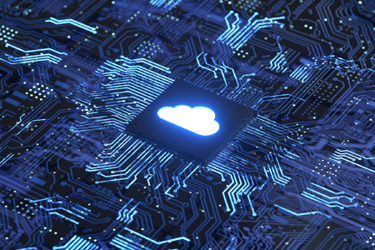3 Reasons Why Medtech & Digital Healthcare Companies Should Consider Direct-To-Cloud Connectivity for IoMT
By Charley Henderson and Nick Warrington, PA Consulting

A critical part of the growing digital health ecosystem, wireless connectivity is a key enabler for all kinds of medical devices that can be used by patients at home and on the move.
For example, connected drug delivery devices such as autoinjectors, inhalers, and blister packs enable pharma companies to offer remote monitoring and management of patient adherence with their products, while wearable sensors enable continuous remote diagnostics. Combined with digital health software platforms, this Internet of Medical Devices (IoMT) infrastructure provides new and efficient means of remote engagement between patients and healthcare professionals. They also provide a route for pharmaceutical and medtech companies to engage with patients directly and deliver additional services. Indeed, as healthcare becomes more customer-centred and data-led, these additional digital services are already driving positive change in patient outcomes and provider efficiency, and hence important sources of competitive advantage for healthcare and life science businesses.
Presently, most connected medical device developments use Bluetooth or near-field communications (NFC) technology. As such, they often rely upon the patient supplying a compatible smartphone with internet connection, then successfully installing and running a bespoke app to get their data to the cloud-based digital health solutions, where value can be derived.
But there is another fast-evolving alternative connection approach that we believe should be seriously considered: direct-to-cloud connectivity. Direct-to-cloud devices use native, in-built technology to automatically connect to the cloud across ubiquitously available public telecommunications networks such as 4G/5G, with no need for patients or healthcare professionals to take additional steps to connect.
While adding smartphone type connectivity into small or single-use medical devices may once have seemed science fiction, a range of new networks and device chips/modules are emerging to make this viable at low cost and in very small form factors.
Cellular network operators are now rolling out 4G and 5G networks that support NB-IoT (Narrowband Internet of Things) and LTE-M (Long Term Evolution for Machines) protocols. These are specifically designed to enable cellular networks to support large numbers of low-power and low-cost devices. Meanwhile, Sigfox and public LoRAWAN networks are being rolled out across multiple countries and regions. These offer an alternative mobile data service, separate from the cellular networks, that is potentially simpler and lower cost through low-power operation in unlicensed bands with low data rates. Finally, public Bluetooth networks are emerging, based upon an ad-hoc infrastructure of connected devices already owned by users. Examples include Tile and, more recently, Apple Airtags and Amazon Sidewalk.
We believe that it is now time that direct-to-cloud solutions should be seriously considered in the development of any connected medical device. Below, we outline three compelling advantages of direct-to-cloud in IoMT.
1. Greater Patient Compliance With The Digital Solution
The first and most obvious benefit of direct-to-cloud is that it’s possible to send data to and from the device with limited or no user intervention. The device can be ready to use right out of the box, with no setup required. Making this connectivity completely seamless can reduce the burden on the patient or HCP, meaning they can focus on how digital features actually help them in their journey, rather than needing to worry about setting up connections or sending data.
This removes one of the most significant barriers to patient adoption of digital health solutions associated with connected medicine packs or drug delivery devices, namely, the need for the patient to install an app, pair their device, and then repeatedly use it with a smart phone during the therapy.
For example, digital solutions are emerging to address poor adherence to medication regimens, arising from incorrect or irregular use by patients of drug delivery devices such as inhalers. These solutions typically rely on a wireless electronic sensor added to the drug delivery device, to detect usage. The data from the sensor is then transferred through the patient’s smart phone to the cloud, and ultimately used to help the patient better take their treatment and provide valuable data for clinicians. Where there is limited coaching value to the patient, or the patient is already adept with the drug device, then requiring the patient to also use their smart phone at the same time can only increase complexity. Furthermore, not all patients may even have a compatible smart phone. Consequently, the proportion of patients both willing and able to adopt the digital solution may be low.
By comparison, a direct connection to the cloud without reliance on the patient’s mobile app can allow a drug delivery device to connect and transfer necessary data in real time. For example, drug products can notify if they are kept out of temperature range or notify caregivers that doses haven’t been taken on time without waiting until the patient next connects. In the case of long-term medication, repeat prescriptions can be ordered as quantities run low without patient intervention.
2. Direct-To-Cloud Devices Can Be Brought To Market Faster And Are Simpler To Maintain
Another important, but less obvious benefit, is that the technical architecture is simplified, reducing the complexity of both the system development and its maintenance.
Using the patient’s smart phone as a data bridge from an NFC/Bluetooth device to the cloud is conceptually attractive because it uses a freely available data connection. However, implementation and maintenance across all possible models of smartphones quickly become significant tasks, particularly when combined with medical device requirements for data integrity and security.
The direct-to-cloud approach removes the patient’s smartphone from the data architecture. Instead, the data is transferred within a closed and secured infrastructure, managed by network operators. Advantages include:
- Simplified data security: The connection between the physical device and the cloud can be maintained within one closed and secured network. For example, 4G/5G wireless data connections have high levels of security, and cellular operators offer services to route the data securely onward, using their own closed network. The device data does not need to pass through a patient’s smartphone or the public internet, eliminating many potential risks.
- Lower regulatory burden: Data sent from the device must remain accurate and consistent if it is to be used for a medical purpose. The use of a pre-existing controlled network such as 4G/5G makes this much simpler to qualify, removing otherwise complex software development and hardware functions required for data assurance through a less-controlled system of multiple uncontrolled devices and networks.
- Simplified app development: Smartphone app development is shifting from native to progressive in design, removing specific phone platform dependencies. However, maintenance challenges remain where deep access to hardware (such as Bluetooth) and localized data are required. Direct-to-cloud connections remove the need for this level of hardware access, potentially resulting in a more reliable, secure, and stable experience for the patient.
3. More Opportunities To Gain Value From The Connectivity
With direct-to-cloud, devices can continue to communicate throughout the product’s life cycle. This can unlock multiple additional opportunities to derive value before, during, and after the patient uses the device.
For example, in the supply chain, location and temperature of a pharmaceutical product can be monitored to help ensure that products reach patients efficiently, when they are needed, and in optimal condition. Developments in sustainability may also mean that devices are returned for reuse or recycling, and the reverse supply chain could be enabled and optimized by wireless tracking.
Increasing the opportunity to gain additional value from the connected device across its life cycle will inevitably increase the credibility of the business case, further justifying the additional cost of any electronics built into the device.
Conclusion
Direct-to-cloud communications should be seriously considered for any new IoMT architecture, and through an IoMT device’s lifecycle. Multiple technologies and networks are already in place to enable direct-to-cloud connectivity, but there are trade-offs to make, not least between the key parameters of data rate, power, geographic availability, reliability, and cost. Not all connectivity use cases for IoMT are appropriate for direct-to-cloud, especially those that require close coupled real time synchronisation between medical device and mobile app. However, where appropriate, direct-to-cloud can be used to address many different use cases, right down to low-cost and physically small medical devices with a perhaps surprisingly low impact on factory cost.
The benefits of improved patient adherence, faster development, simpler maintenance, and wider opportunities to derive value from connectivity make a compelling proposition compared to native app-oriented solutions.
About the Authors:
 Charley Henderson is an IoT and connected devices expert at PA Consulting. He specializes in the creation of ultra-small and low-power connected sensor solutions, to bring the Internet of Things to low-cost and simple products across the life sciences, medical, and consumer goods sectors. This includes the development of both new products and fundamental new technologies to enable innovation in digital health. He holds a Ph.D. in photonics, MEng in electrical and information engineering, and is a Chartered Engineer and member of the IET and IEEE.
Charley Henderson is an IoT and connected devices expert at PA Consulting. He specializes in the creation of ultra-small and low-power connected sensor solutions, to bring the Internet of Things to low-cost and simple products across the life sciences, medical, and consumer goods sectors. This includes the development of both new products and fundamental new technologies to enable innovation in digital health. He holds a Ph.D. in photonics, MEng in electrical and information engineering, and is a Chartered Engineer and member of the IET and IEEE.
 Nick Warrington leads innovation and new product development for medtech, biotech, and pharma clients within PA Consulting. He has over 20 years’ experience in bringing life science technology to market and specializes in creative system solutions for bringing front-end science, new products, and digital solutions together for a better patient experience.
Nick Warrington leads innovation and new product development for medtech, biotech, and pharma clients within PA Consulting. He has over 20 years’ experience in bringing life science technology to market and specializes in creative system solutions for bringing front-end science, new products, and digital solutions together for a better patient experience.
